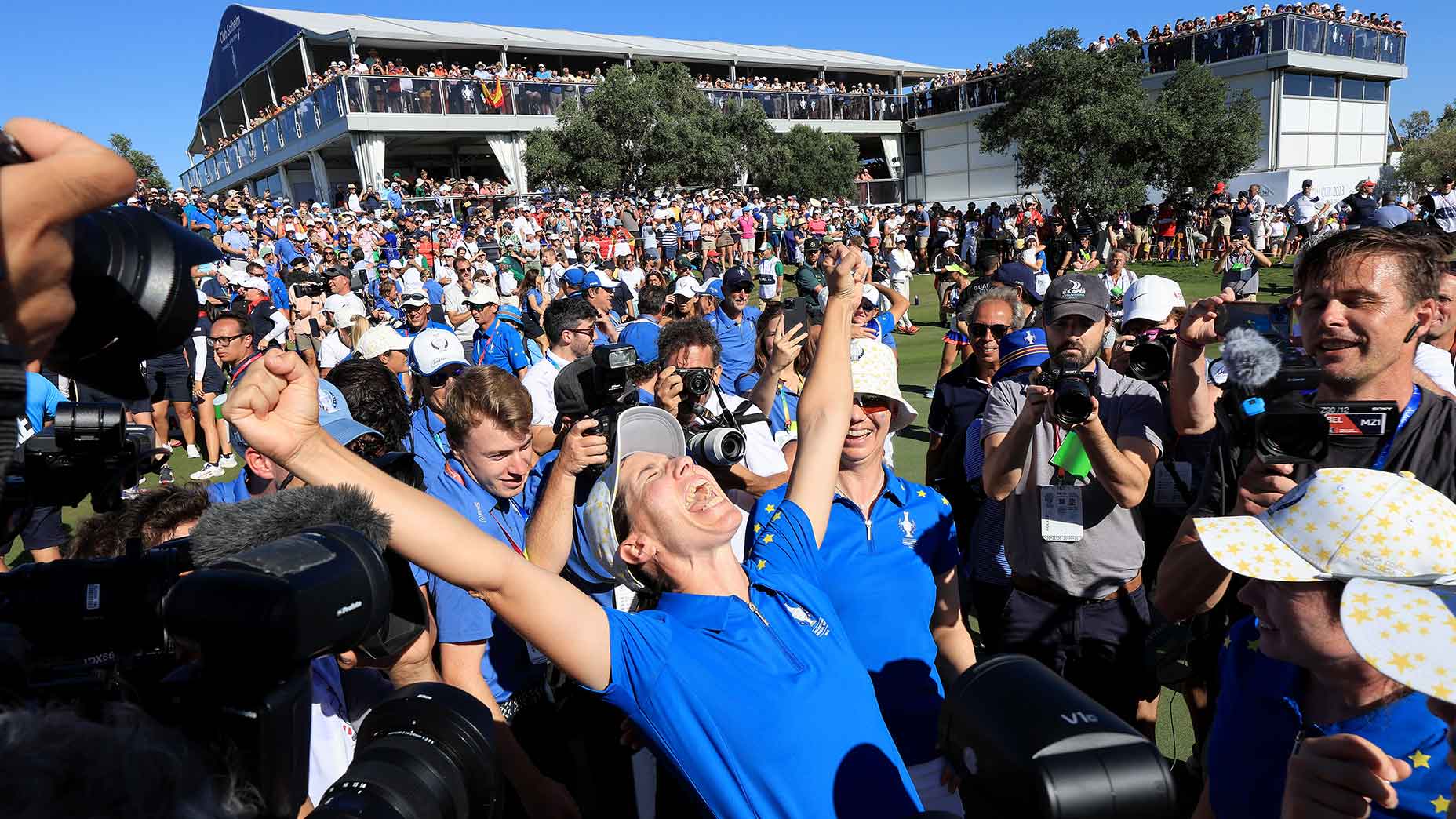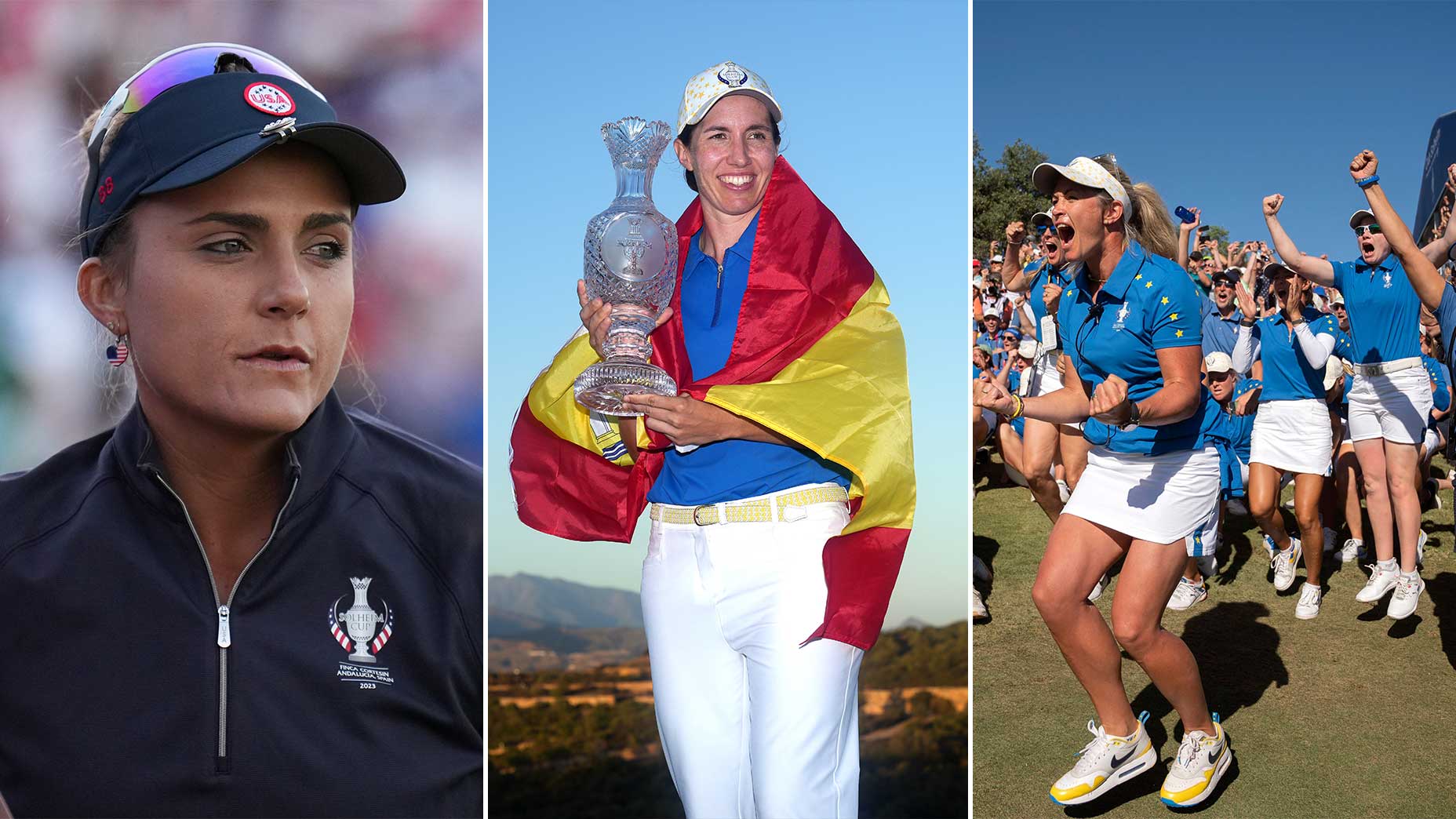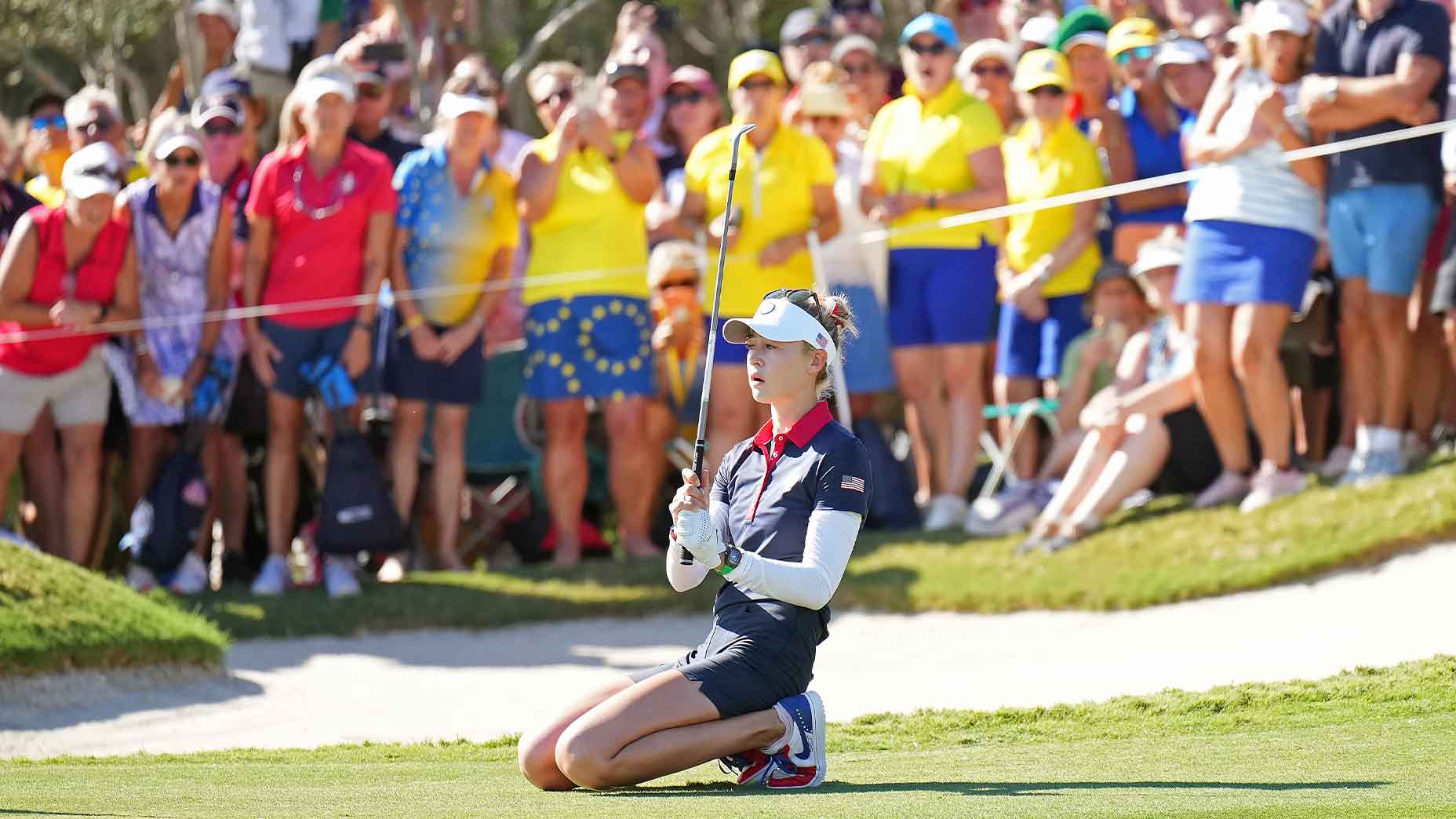Solheim Cup’s ‘awkward’ finish could have been avoided. Here’s how

The Europeans celebrating their Solheim Cup-retaining point on Sunday.
getty images
You couldn’t have asked for much more from this 18th edition of the Solheim Cup: a hot U.S. start followed by a spirited European comeback; an 8-8 tie after two days that led to a nail-biting Sunday singles session; Spaniard Carlota Ciganda, on her home soil, claiming the point that ensured Europe would retain the Cup.
Gripping theater, all of it, though there was one glaring shortcoming: no outright winner.
For the first time in Solheim Cup history, the event ended in a 14-14 deadlock, which meant the defending Cup-holders — in this case, Europe — retained the prize. The Ryder Cup follows this same format (the event has twice finished in a tie), and it’s a shame, because after three days of riveting competition and players leaving every ounce of themselves on the course, as a golf fan you couldn’t have been blamed for wanting to see a winning team that actually, you know, won.
Sour grapes? Nah. I would feel no differently if the Americans had retained the title by the same manner. It’s merely the opinion of an interested observer left feeling a bit unsatisfied at the conclusion of a heated contest.
Imagine if the New England Patriots had tied the Philadelphia Eagles in regulation at Super Bowl XXXIV, and Brady and Co. had been declared the winners only because they were the defending world champs. Or if the United States women’s national soccer team had tied Germany in regulation at the 2003 World Cup final and been awarded the trophy merely because they had won the Cup four years earlier. Fans would be aghast.
Yes, on paper the Solheim and Ryder Cups are only “exhibitions,” but that’s a woefully inadequate descriptor for the magnitude of these events. To most players and fans, these biennial international match-play showdowns mean as much, if not more, than major championships.
Which brings us back to Sunday afternoon at Finca Cortesin, where flag-waving, wig-wearing fans from both sides of the equation made the Solheim Cup Spain’s most electric party this side of Ibiza. When Ciganda, in her match against Nelly Korda, stuck her tee shot at the par-3 17th to kick-in range, you could almost hear the roars on the other side of the Atlantic.
Minutes later, when Ciganda tidied up her birdie putt, she had beaten Korda 2 and 1 and locked up Europe’s all-important 14th point which meant it couldn’t lose the Cup. It was over, though not over over, because the final match — Lexi Thompson vs. Emily Pedersen — was still in progress, with Thompson 2 up through 16 holes.
Thompson and Pedersen looked on from the 17th tee as players, captains and assorted hangers-on joyfully spilled onto the green to celebrate Ciganda’s decisive point. One on-looker even marched through a greenside bunker.
“I get the celebrations from Europe,” Golf Channel broadcaster Tom Abbott said from the booth, “but it doesn’t always sit well for me that the teams celebrate and it’s going to be a tie. I don’t know about you at home.”
Added his boothmate, Judy Rankin, a Hall of Famer who has captained two U.S. Solheim Cup teams to victory: “It has always been awkward and a bad ending when players have to finish when the match has been decided. But a lot of players — not every player — but a lot of players are so interested in their record when all the dust clears.”
Abbott: “But I think the point is, it really hasn’t been decided.”
Rankin: “True, I understand.”
Abbott: “You know what I mean?
Rankin: “I understand what you’re saying.
Abbott: “We’ve gotten to this point now where we celebrate tying the Ryder Cup or the Solheim Cup when, to me, both teams have played equally well.”
Amen, Brother Abbott! And it doesn’t have to be this way. Witness the Presidents Cup, which until 2005 had in its bylaws the most inspired of tiebreakers: a sudden-death playoff between two players “in the envelope,” meaning each’s team respective captain had chosen their playoff participants in advance.
Oh, the drama! Imagine, say, Megan Khang and Leona Maguire going toe-to-toe in bonus golf to decide a team winner. Or Ciganda, with the will of her home-country fans behind her, and Lexi Thompson staring each other down as they prepared for a do-or-die hole, tens of thousands of fans packed around a single green.
Don’t like the notion of matches being decided by only one player? OK, pick two representatives from each side and send them out in a sudden-death fourball match. Or have six players across three singles matches. First side to win two holes wins. Smarter people than me will have better ideas than those. Take NBC analyst John Wood, who tweeted on Sunday: “In my humblest of humble opinions, the ‘Retain’ needs to go in all of these competitions. Send out all 12 from both sides go play one par 3. Total strokes wins.”
Only once did the Presidents Cup employ a playoff, and it resulted, in 2003, in arguably the greatest Presidents Cup moment ever: Tiger Woods and Ernie Els, then numbers 1 and 2 in the world, respectively, duking it out mano-a-mano for the Cup in Els’ native South Africa. Three holes later, with Woods and Els still tied and dusk settling in, U.S. captain Jack Nicklaus and his counterpart Gary Player agreed to call it a tie. But, hey, at least they had tried to settle the contest. (Darkness, by the way, would not have been an issue in Spain, where the matches ended with at least three hours of remaining sunlight.)
U.S. captain Stacy Lewis, for one, didn’t write off the idea of extra holes being a good idea. During the closing ceremonies Sunday evening, Lewis said she discussed with LPGA commissioner Molly Marcoux Samaan whether some kind of tiebreaker would make sense.
“Obviously would be better TV,” Lewis said in a press conference. “It would be a better experience for the fans if there was a — whether it was a team playoff or something like that, I think that would be pretty cool. But if you want to stick with the history of the event and history of what the men do as well, you probably stick with retaining the Cup. I don’t know how I feel about that either way, to be honest.”
I know how I feel. Sure, history is important, but so too is evolution. It’s time to evolve.










